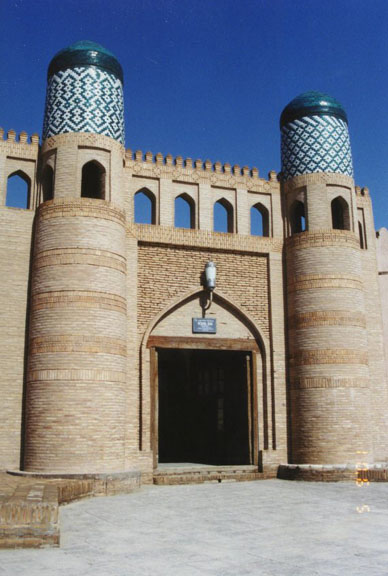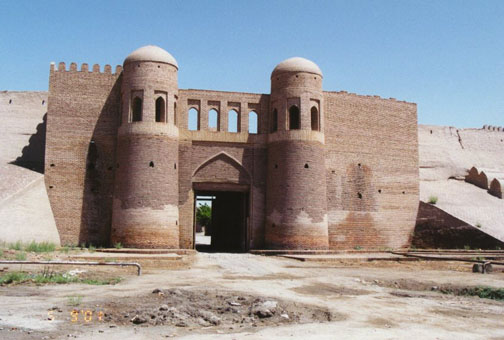

Khiva

gate of the walled city
Khiva, also known as Khorezm, formerly a large khanate of west central Asia, south of the Aral Sea, now part of Uzbekistan and Turkmenistan.
the city walls
(note the graves on the walls)Khiva is also the name of a town in northwestern Uzbekistan near the Turkmenistan border; the town is noted for its many historic buildings, such as the Islam-Khodzha Minaret and the mausoleum of the khans.
the minaret
view across the city
another view of the minaret
In ancient times the Oxus River (now Amu Darya), which passes through the region, emptied into the Caspian Sea and thus provided the ancient state with a waterway to Europe.
graves
An Uzbek khan founded the town of Khiva in the early 16th century as the capital of his khanate, which also became known as Khiva. Russia annexed part of the khanate in 1873, and controlled the rest of Khiva as a protectorate.
mausoleum
interior grave location
In 1919 the Russians deposed the khan of Khiva, dissolving the khanate, and in 1920 Khiva became the Khorezmian People's Soviet Republic. In 1924, after the Union of Soviet Socialist Republics (USSR) was formed, the Khorezmian People's Soviet Republic was split between two of the constituent republics, the Uzbek Soviet Socialist Republic (SSR) and the Turkmen SSR.
many pillared mosque with wooden roof
every Medressa a sales room for handicraft
camel for the tourists
Medressa facade

the builder and his city

another city gate
![]()
![]()